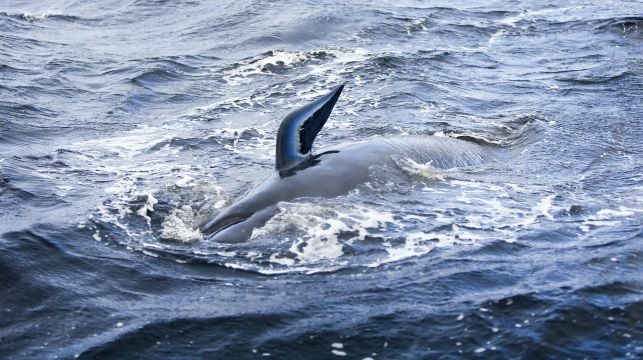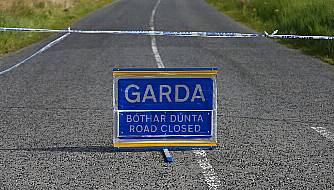An increase in sea levels and temperatures is resulting in rare sightings of mammals turning up on Irish coastlines more common.
The latest discovery of a dead juvenile humpback whale on a Co Mayo beach comes from the recent news about such species expanding their range to Irish northwest waters.
An Irish Whale and Dolphin Group spokesman explained that this was a ‘significant stranding record’ and strandings officer, Stephanie Levesque confirmed it is only the 11th humpback whale stranding record for Ireland.
It was found on Doughmakone Beach, south of Roonagh Point in Mayo last Thursday evening.
The site was visited on Friday by Mark Reed, of the Irish Whale and Dolphin Group (IWDG) and Miguel Blasques from Atlantic Technological University (ATU) and what was gleaned was that the whale measured 8.45 meters in length, which would make it a juvenile or sub-adult.
Much of the dermal layer was gone, which suggested the animal had been dead for some time.
A IWDG spokesman said that thankfully, its position made it possible to obtain ‘fluke images, alas almost all the skin is gone from the ventral surface and with it went our best chance of trying to match it to the Irish humpback catalogue.
"(This) may have enabled us to establish whether this is a known individual or indeed a new humpback for Ireland."
The spokesman continued that each such event provides an opportunity to learn more about humpback whales.
‘Despite the nature of this event, we have to remind ourselves that most animals in the wild die of natural causes and as we are experiencing an increase in sighting reports of this iconic species in the northwest, this stranding likely reflects on the increase in their numbers.
‘It seems reasonable to say that with the increase in humpback sightings, we are likely to witness a parallel increase in their strandings, as one is a subset of the other.’
Mayo County Council delayed burying the whale carcass so that IWDG had an opportunity to examine it in greater detail for clues as to a cause of death and to obtain skin and blubber samples for genetic analyses.
Also, last week members of the public were asked to report any sightings of a pod of 20 whales spotted in the Waterford Estuary by marine experts.
The pod of long-finned pilot whales was spotted by Wexford man, Damien Quinn who was flying a drone over the estuary at the time on Monday evening.
The Group were concerned as the most critical time for intervention is before they live-strand, or beached and there is very little experts can do to keep them alive.
In an appeal the Group asked that any fresh sightings along Dunmore East and Creadan Head in Waterford, Duncannon and Arthurstown in Wexford to notify to them.
‘As the most critical time for intervention is before they live-strand, and so if we know in advance where they are and feel that a stranding is imminent we have the option to cut them off from the shoreline and attempt to coax them to deeper and safer waters,’ the Group noted.
They added that once whales have live-stranded, it is really “too late and in most circumstances, most will not survive due to their large size and bulk, with adult bulls weighing up to three tonnes.”
According to the IWDG the pod was in a very "tight formation and behaving in a manner suggesting they are stressed.”
The second largest of our oceanic dolphins, pilot whales are generally found in deeper waters off the continental shelf edge (around 1,000m), and sightings under these circumstances are often associated with mass live-stranding events.
IWDG have, through the Maritime Rescue Coordination Centre (MRCC) in Dublin, officially requested the assistance of the local RNLI in Dunmore East to try and encourage them back into deeper offshore water as light faded on Monday.
An initial search of the area early last Tuesday morning by a Group member resulted in no further sightings of the pod, however it is a huge area and “is certainly too large for one person to cover” the Group explained.
The systematic warming of the planet is directly causing global mean sea level to rise in two primary ways, mountain glaciers and polar ice sheets are increasingly melting and adding water to the ocean.
The warming of the water in the oceans leads to an expansion and thus increased volume. Global mean sea level has risen approximately 210 to 240 millimeters since 1880, with about a third coming in just the last two and a half decades. Currently, the annual rise is approximately 3mm per year.
Regional variations exist due to natural variability in regional winds and ocean currents, which can occur over periods of days to months or even decades. But locally other factors can also play an important role, such as uplift (continued rebound from Ice Age glacier weight).
Other factors include subsidence of the ground, changes in water tables due to water extraction or other water management, and even due to the effects from local erosion.







